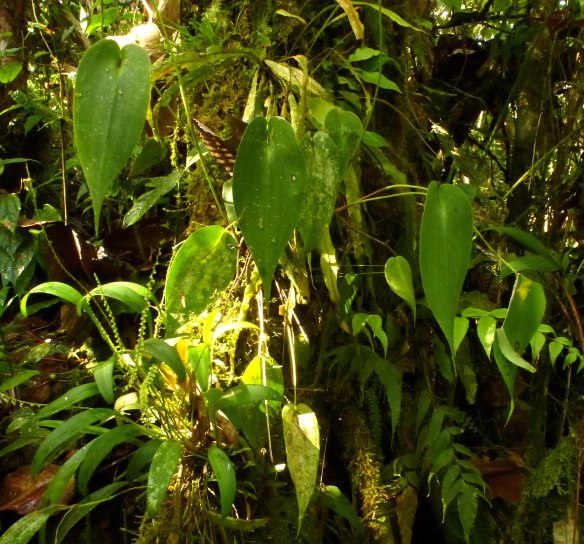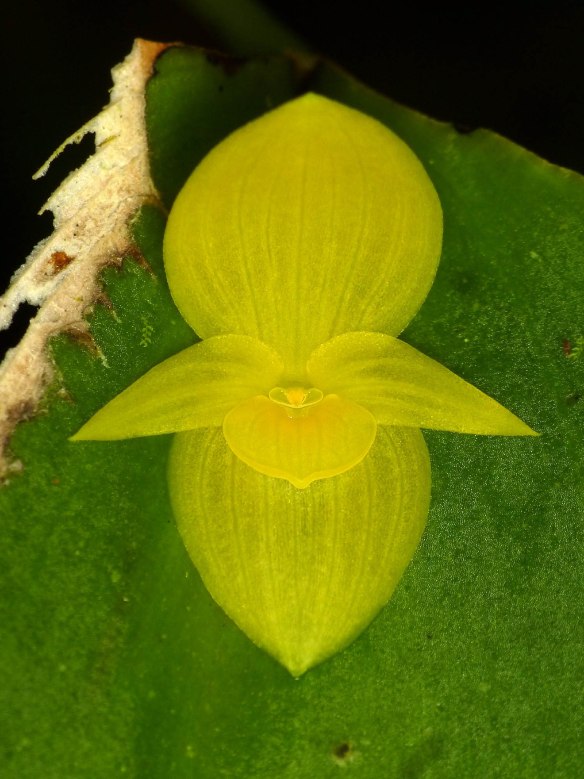
Pristimantis ardyae. Photo: Juan Pablo Reyes.

The publication describing Pristimantis ardyae, in the journal “Avances”, published by the Universidad San Francisco de Quito.
A few years ago we built a basic research cabin in a remote part of our Rio Zunac Reserve, five hours’ walking distance from the nearest road, with a grant from the IUCN-Netherlands. The first scientists to stay there were herpetologists from the Museo Ecuatoriano de Ciencias Naturales and the Universidad Catolica, led by Mario Yanez, the late Marco Reyes, and our own Juan Pablo Reyes. The expedition was financed by our long-time Rio Zunac supporters Henri Botter and Ardy van Ooij, with additional work financed by Nigel Simpson. The group did a fast but careful survey of the reptiles and amphibians of many different habitats and elevations accessible from the cabin.
The most interesting thing they found was a beautiful frog belonging to the complicated large genus Pristimantis. It took a long time to search the literature and review collections, but they finally determined that this frog was new to science! They named it Pristimantis ardyae to honor Ardy and Henri for their support of the reserve. They only found one individual of this species, but it was distinctive enough to describe as new with confidence. It was found on a sharp ridge at 2200m. On this same ridge, at 2000m, they also found another apparently undescribed species of Pristimantis which they are currently researching.

The Cordillera Abitagua is the first line of mountains facing the immense Amazon Basin. Click to enlarge. Image: Google Earth.
It’s no accident that this system of ridges, known as Cerro Abitagua, has unique species. These are the first high ridges on the western edge of the vast flat Amazon basin. Warm moist Amazonian winds move from east to west and are pushed upwards by these ridges. The rising air cools, causing the water vapor to condense. The result of this constant interaction between the topography and the atmosphere is a nearly permanent cloud layer above about 1700-1800m. The vegetation abruptly changes above this line, and so do the frogs. Scientists who make it this far are treated to an evolutionary island every bit as interesting as the Galapagos. It is as interesting for unique plants as it is for frogs. I discovered many new species of orchids there, including Lepanthes spruceana, L. abitaguae, L. pseudomucronata, L. mooreana, and others I have not had time to publish yet. Earlier explorers, particularly Alex Hirtz and Stig Dalstrom, also discovered many new orchids there, including Teagueia zeus, Lepanthes zunagensis, Dracula fuligifera, and many more. A dramatic new species of tree, Meriania aurata, was also recently discovered there.

Dracula fuligifera, an orchid found only in the Cordillera Abitagua above the Rio Zunac. Its lip mimics a mushroom to attract fungus gnats for pollination.
This amazing concentration of locally endemic plant species was the reason we chose to protect the area. The same unique climatic, topographic, and historical factors that lead to the evolution of endemic plants are also likely to lead to the evolution of local endemic species in other taxonomic groups, like frogs. These latest herpetological discoveries confirm this idea. This is an important result for conservation biology, as it shows the value of using locally-endemic orchids as indicators of broader conservation value.

Our research station under construction, with cement lower columns. All the wood was milled from trees that had fallen naturally in the forest; no trees were cut for this structure.

We’ve added the roof in this picture. We made it translucent to help keep the interior warm and dry.

The team of herpetologists who discovered Pristimantis ardyae, standing in front of our finished research station.
We invite interested students and researchers to visit our reserve and cabin. Reservations are required. Write me for more information. My gmail address is just my name (first and last name combined in order, all one word) at gmail.com
Lou Jost
http://www.ecominga.com
http://www.loujost.com













